Click on images to enlarge
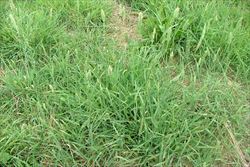
infestation (Photo: Sheldon Navie)
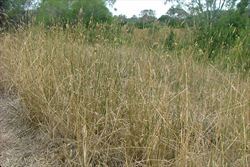
infestation during the dry season (Photo: Sheldon Navie)
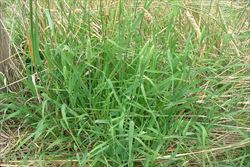
habit in flower (Photo: Sheldon Navie)

habit during the dry season (Photo: Sheldon Navie)

close-up of stem and base of leaf blade (Photo: Sheldon Navie)

young seed-head (Photo: Sheldon Navie)

seed-head in flower (Photo: Sheldon Navie)
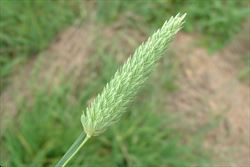
immature seed-head (Photo: Sheldon Navie)

close-up of flower spikelets (Photo: Sheldon Navie)
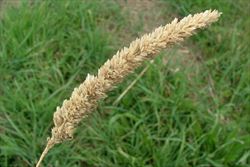
mature seed-head (Photo: Sheldon Navie)
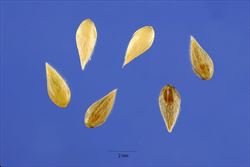
close-up of seeds (Photo: Steve Hurst at USDA PLANTS Database)
Scientific Name
Phalaris aquatica L.
Synonyms
Phalaris nodosa MurrayPhalaris stenoptera Hack.Phalaris tuberosa L.Phalaris tuberosa L. var. stenoptera (Hack.) A. Hitchc.
Family
Gramineae (South Australia)Poaceae (Queensland, New South Wales, the ACT, Victoria, Tasmania, Western Australia and the Northern Territory)
Common Names
Australian canary grass, Australian canary-grass, Australian phalaris, bulbous canary grass, bulbous canarygrass, Harding grass, phalaris, Toowoomba canary grass, Toowoomba canary-grass, tuberous canarygrass
Origin
Native to northern Africa (i.e. Algeria, Libya, Morocco and Tunisia), the Madeira Islands, the Canary Islands, southern Europe (i.e. France, Portugal, Spain, Albania, Bulgaria, Greece, Italy and Yugoslavia) and western Asia.
Naturalised Distribution
Widely naturalised in southern and eastern Australia (i.e. in eastern New South Wales, the ACT, Victoria, Tasmania, south-eastern South Australia and south-western Western Australia). Also naturalised on Lord Howe Island and sparingly naturalised in central Queensland.
Widely naturalised overseas including in the UK, southern Africa, New Zealand, the USA and Hawaii.
Notes
Phalaris (Phalaris aquatica) is regarded as an environmental weed in Victoria, South Australia and New South Wales. It was also recently listed as a priority environmental weed in three Natural Resource Management regions. This species has been widely cultivated as a pasture grass in the temperate regions of Australia, particularly on the New South Wales tablelands. It is a weed of pastures, grasslands, open woodlands, roadsides, waste areas, disturbed sites, creek banks, riparian vegetation, floodplains and wetlands in the temperate and cooler sub-tropical regions of Australia.

